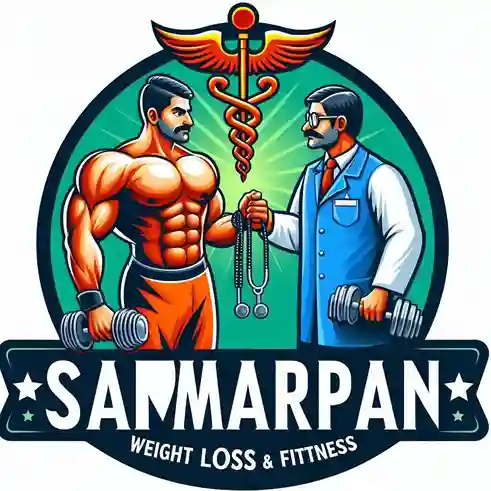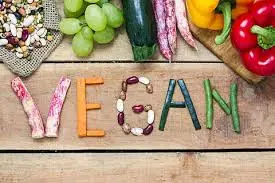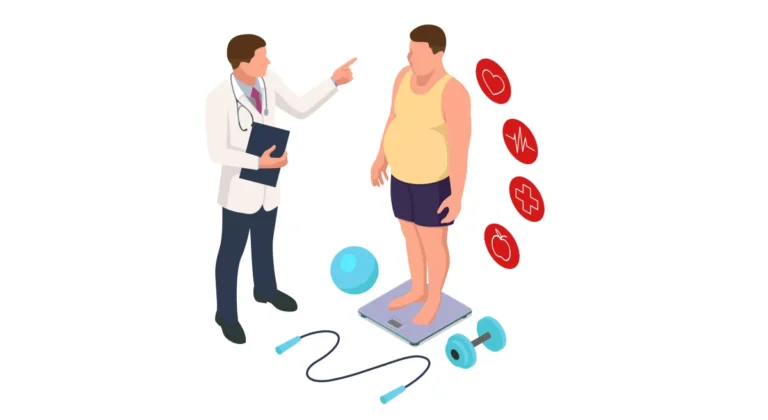Vegan Diabetic Diet
Introduction
An animal-free plant-based diet that emphasizes fruits, vegetables, whole grains, nuts, and legumes is known as a vegan diabetes diet. In addition to helping control blood sugar, this diet may lower the risk of type 2 diabetes. In the UK, vegan diets are growing in popularity. Being plant-based, a vegan diet excludes all animal products, including dairy, meat, fish, and honey. The main ingredients in vegan cookery are grains, seeds, beans, pulses, nuts, vegetables, and fruits.
If you have diabetes and would like to follow a healthy vegan diet, our meal plan is made to assist make sure you are eating foods that satisfy your nutritional needs. Eating with diabetes can be difficult.
Although you can get all the nutrients you require from a well-planned vegan diet, some vitamins and minerals are more difficult to locate in vegan meals.
Therefore, you might want to think about taking a vitamin and mineral supplement that is suitable for vegans and contains B12, iodine, vitamin D, Omega-3, and selenium. To ensure that you are taking the appropriate amount, you should discuss this with your medical staff.
For your convenience, this meal plan includes calorie and carb counts. Additionally, it includes a minimum of five servings of fruits and vegetables each day.
To assist you ensure that you are fulfilling your nutritional needs, we have also added the fiber value. Since many people in the UK are known to be underfed, it is crucial to make an effort to incorporate wholesome sources of fiber into your daily diet.
An important part of managing diabetes is eating a balanced diet.
You might be wondering if a vegan diet can help you better manage this illness if you have it. On the other hand, you might be vegan and recently found out you have diabetes.
Knowing how to shop, prepare meals, and keep an eye on yourself is crucial if you have diabetes and want to follow or maintain a vegan diet. Diabetes can be managed while adhering to a vegan diet, while other diets can assist control the illness.
This offers a 3-day sample meal plan as well as information on the vegan diet for diabetes, including its advantages and disadvantages as well as tips for sticking to the diet.
Before starting this vegan diet
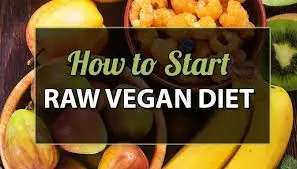
Please read “How to Choose Your Meal Plan” before beginning any healthy eating program to ensure that you follow the plan that works best for you. Before making major dietary changes, please with your diabetes healthcare team.
This is particularly crucial if you take insulin or other diabetic drugs that raise your risk of hypoglycemia, or hypos, which is low blood sugar. Your prescription may need to be adjusted if you reduce your carbohydrate consumption and experience changes in your body weight.
Diabetes-friendly vegan recipes
Finding plant-based, low-carb, unprocessed, and delicious prepared food might occasionally seem like a daunting task. Therefore, you should try cooking if you choose to try being vegan.
Catherine Newman, a writer at diatribe, has some fantastic vegan recipes:
- Protein is abundant in tofu. Try Tofu, Broccoli, and Radishes with Curried Peanut Sauce, Flavor-Saturated Tofu, Roasted Tofu and Brussels Sprouts with Ginger Vinaigrette, or Grilled Tofu Salad with Spicy Peanut Dressing.
- A fantastic low-carb alternative to rice, cauliflower rice is also nutrient-dense and high in fiber. It goes well with tofu recipes as well.
- Another vegetable-based, low-carb substitute for pasta is zucchini spaghetti.
- Mason jar salads, omit the cheese and make a convenient meal to eat on the run.
- To add some variation, try other salads and veggie sides. Try the Collapsing Cabbage, Bright Roots Slaw (use the mason jar vinaigrette instead of mayonnaise), Lemony One-Pan Green Beans, and Best Roasted Vegetables.
- Try the Overnight Berry Chia Pudding, Basic Edamame, or Lemony Hummus if you’re searching for some high-protein snacks.
How diabetes is treated with a vegan diet
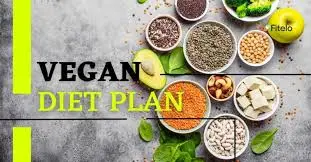
Meat, dairy, and other animal-based products are excluded from the vegan diet. Even though it can be a healthy eating pattern, it needs to be carefully planned to ensure that you are getting all the nutrients you need. It will take additional preparation for diabetics to follow a vegan diet.
Since carbohydrates have a greater impact on blood sugar levels than fat and protein, patients with diabetes should generally maintain a steady diet of carbohydrates throughout the day.
Since having noncard foods in your meal might help lessen the impact of carbohydrates on your blood sugar, meals and snacks should also be balanced with carbohydrates, protein, and healthy fat.
All of this can be accomplished with only plant-based foods, though if you’re new to the vegan diet, it could be a little difficult.
If you’re on a vegan diet for diabetes, you can utilize the following types of carbohydrates, proteins, and lipids to make meals and snacks:
- Carbohydrates include corn, rice, potatoes, oats, grits, quinoa, whole grain flour (bread, pasta), and fresh, frozen, or canned unsweetened fruit.
- Proteins include peanuts, tree nuts, nut butter, seeds, beans, lentils, peas, soybeans, and their derivatives (tofu, tempeh), and plant-based meat substitutes.
- Fats: plant-based spreads, nuts & seeds, coconut, avocado, avocado oil, and olive oil
- Thankfully, a lot of plant-based foods, like grains and beans, have a combination of fat, protein, and carbohydrates, so they can serve two or three purposes in your meal planning.
- Additionally, the majority of plant-based diets contain fiber, a form of indigestible carb. In addition to making these foods seem more satisfying, fiber may lessen the influence they have on blood sugar levels.
- The ideal amount of carbohydrates you require with each meal can be determined by your healthcare team, including a registered dietitian nutritionist (RDN), based on your age, sex, physical activity level, type of diabetes, and several other factors.
Key details regarding this food plan
- Unless otherwise noted, this meal plan uses nutritional data from the sixth edition of Carbs and Cals and our recipes.
- This meal plan has been prepared using unsweetened soy milk, but feel free to substitute any dairy product of your choice. Your choice of dairy substitute should be unsweetened and supplemented with vitamin B12 and calcium.
- Additionally, be sure your dairy substitutes are iodine-enriched.
- These weekly meal plans provide the recommended amount of fiber. Adults are advised by the government to ingest 30g of fiber daily. Depending on their age, children require different amounts of fiber in their diet.
- Although the daily food intake is outlined in these meal plans, it’s still crucial to remember to drink plenty of water. Plain water, sugar-free soft drinks, plain soy milk (or other substitute), and sugar-free tea or coffee are all included in this category.
- This meal plan makes use of soy and linseed bread, which is a high source of omega-3 fatty acids. Oily fish are a good source of omega-3, but there are also plant-based options. Make an effort to incorporate hemp, chia, walnut, or linseed seeds into your regular diet. Additionally, you might use flaxseed or rapeseed oil for cooking.
Benefits of a vegan diet for diabetics
Improved Insulin Sensitivity
Type 2 diabetes is characterized by insulin resistance. This means that insulin, the hormone that lowers our blood sugar, isn’t as effective. High blood sugar levels, which are frequently observed in type 2 diabetes, are caused by this.
Controlling weight
Maintaining a healthy weight is essential for people with diabetes to lower their risk of complications from the disease. Numerous qualities of plant-based diets have been demonstrated to be advantageous in attempts to control weight. Reduced calorie density, increased fiber content, and decreased saturated fat content are some advantageous characteristics. Check out our Vegan Meal Prep for Weight Loss page for more details.
Promotes heart health
Vegan diets may reduce the risk of cardiovascular (heart) disease, according to research. The main cause of this impact is that plant-based diets tend to be higher in heart-healthy elements like fiber and antioxidants and lower in saturated fats. A plant-based diet can be especially beneficial for diabetics because they are more likely to develop cardiovascular disease.
Better control of blood pressure
However, recent studies show that diets composed of plants can increase sensitivity to insulin. Better blood sugar management results from the body’s increased ability to use insulin.
The amounts of various fats (lipids) in your blood are referred to as your lipid profile. High blood pressure can result from a poor lipid profile, which is defined by abnormally high amounts of triglycerides and cholesterol. High blood pressure, or hypertension, can raise the risk of complications from diabetes, such as retinopathy, renal disease, and cardiovascular disease. Plant-based diets, however, have been found to enhance lipid profiles. Therefore, switching to a plant-based diet can help diabetics control their blood pressure and lower their chance of problems.
A plant-based diet’s lower consumption of processed foods (sodium) and saturated fats can help regulate blood pressure. Another factor is the increased consumption of antioxidants and fiber linked to the switch to a plant-based diet.
Decreased inflammation
People with diabetes may benefit from a vegan diet in several ways, including a reduction in inflammation. Chronic inflammation is linked to type 2 diabetes, and this inflammation can pose several health hazards. A plant-based diet can help reduce these risks because it contains fiber, healthy fats, and minerals that reduce inflammation.
Enhances general health
All of your nutritional needs can be satisfied and a wide variety of healthy nutrients can be obtained from a balanced plant-based diet. A vegan diet can help manage diabetes and improve general health because it is rich in vitamins, minerals, and antioxidants.
Possible advantages
A vegan diet may help people with diabetes regulate their blood sugar, insulin sensitivity, and weight, among other possible, scientifically supported advantages.
Control of blood sugar
The benefits of a low-glycemic vegan diet and a traditional diabetic diet were evaluated in a 12-week trial involving 93 Korean individuals with diabetes. Researchers discovered that compared to a traditional diet, a vegan diet produced somewhat better blood sugar control.
Another study found that plant-based diets, such as the Dietary Approaches to Stop Hypertension (DASH) diet, vegan, vegetarian, and Mediterranean diets, tended to lower hemoglobin A1C by 0.8%.
An excellent predictor of long-term blood sugar control is your hemoglobin A1C level, which measures blood sugar control throughout the preceding three months.
These results, however, are not specific to vegan diets. Blood sugar control may be enhanced by several additional dietary patterns. There is stronger evidence to support the use of certain diets, such as low-carb or Mediterranean-style diets, in the management of diabetes.
Sensitivity to insulin
The main hormone that keeps blood glucose levels within acceptable ranges is insulin.
Increasing insulin sensitivity can help lower blood sugar and insulin levels, as well as the requirement for insulin injections in certain diabetics since type 2 diabetes is characterized by insulin resistance, which occurs when cells stop responding to the hormone insulin.
The homeostasis model assessment index for insulin resistance (HOMA-IR) is one tool used by researchers to quantify insulin resistance.
Researchers found that 244 overweight people who adopted a low-fat vegan diet experienced larger drops in their HOMA-IR than those who continued to eat their regular diet, indicating an increase in insulin sensitivity, throughout a 16-week trial.
A vegan diet dramatically decreased HOMA-IR, body weight, and fat mass when compared to a control diet, according to a similar study conducted in 75 overweight persons.
Scientists hypothesize that compared to plant proteins, animal proteins might have a greater role in the development of insulin resistance. But the quality of the diet as a whole probably plays a bigger role than eating or avoiding animal proteins.
Controlling weight
Last but not least, a vegan diet may assist individuals with type 2 diabetes control their weight. Insulin sensitivity can be improved by losing weight, and vegan diets are often lower in calories and fat than omnivorous diets, which may facilitate weight loss.
In addition to the reductions in insulin resistance seen in the aforementioned studies, researchers found that the vegan diet increased weight loss and body fat.
Researchers found that vegans lost more than twice as much weight as those who followed less rigid plant-based eating habits, such as vegetarian, pescatarian, and semi-vegetarian diets, in a 6-month trial including 63 overweight adults.
The top ten diabetic-friendly vegan dishes
Soup with lentils and mushrooms
In addition to being flavorful, this delicious meal is diabetic-friendly. Its plant-based components give you protein, fiber, and complex carbs to help you control your blood sugar. You can indulge in this filling meal guilt-free in less than 30 minutes.
Tostadas without meat
This delicious recipe is a must-try for beginners and is packed with vegetables, fiber, and plant-based protein. Savor this tasty plant-based fiesta with a Mexican flair, knowing that it fits nicely with your diabetes-conscious diet.
Fritters of cauliflower with chickpea chops, cucumber, and tomato
This recipe, which was created by the Diabetes Care Community, offers a variety of flavors and textures to suit your palate. You can easily add your favorite beans and vegetables to the “chop” by modifying this recipe. This recipe might become a mainstay in your collection of diabetes-friendly meal prep recipes because it requires very little preparation time.
Stir-fried chickpea tofu with lemon, zucchini, and greens
This dish is a fantastic method to improve your meal preparation if you have diabetes. This easy recipe gives your plates a boost of freshness and plenty of nutrients. Its healthy ingredient mix helps regulate blood sugar, allowing you to savor the flavor without worrying about it.
Simple Moroccan soup for vegans
This Moroccan-inspired plant-based cuisine is flavorful, nutrient-dense, and only takes 30 minutes to make. The red lentils in this recipe are a diabetic-friendly option in addition to providing essential nutrients including protein, iron, and fiber.
Red lentils help regulate blood sugar since they are complex carbohydrates with a low glycemic index. This recipe is a terrific addition to your menu because of its colorful flavors, nutrient-dense ingredients, and diabetes-friendly characteristics.
Summer Rolls in Rainbow
We urge you to “eat the rainbow” since we are qualified dietitians. You can obtain a wide range of nutrients by selecting a choice of fruits and vegetables with varying colors. This diabetes-friendly dish helps you control your blood sugar levels by providing you with a lot of fiber and protein.
Stir-fried vegetables
A popular recipe that can easily fit into even the busiest schedules is stir-fries. You can use up any leftover vegetables in your fridge and get plenty of nutrients with this go-to meal. This meal is a diabetic-friendly option because it has a variety of fiber and protein sources.
Spicy peanut sauce, smoked tofu, and spiralized vegetable noodles
For a crunch of protein, pan-fried smoked tofu is layered on top of vegetables in this meal. In addition to being diabetic-friendly, this dish is enjoyable to prepare. This recipe is a family-friendly and health-conscious option.
Stack Burger for Vegans
This dish turns burgers into a pleasant and nutritious diabetic-friendly choice by using plant-based foods that are high in fiber and low in glycemic. Never has a focus on beans and vegetables tasted better. This meal is sure to please every member of the family.
Lentil Bolognese without meat
Without vegan lentil Bolognese, our list of the top ten dishes wouldn’t be complete! It’s true that pasta, a traditional comfort dish, can be good for those with diabetes! Selecting whole-grain noodles can lower the meal’s glycemic load. This plant-based cuisine will let you forget about meat and has a lot of protein and fiber.
Possible drawbacks
In general and for diabetics in particular, there are certain possible drawbacks to the vegan diet. Fortunately, with good planning, these drawbacks can be avoided.
Deficits in some nutrients
Vegans are more likely than non-vegans to experience deficits in some nutrients, especially those found in animal foods, such as vitamin B12, vitamin B6, niacin, iron, calcium, omega-3 fats, iodine, and zinc.
However, you can obtain all of these elements by intentionally including plant-based foods that are high in these nutrients in your diet or by taking supplements.
Examples of vegan sources of these nutrients include the following:
- Fortified nutritional yeast, fortified cereals, and tempeh are sources of vitamin B12.
- Chickpeas, potatoes, bananas, and fortified cereals are good sources of vitamin B6.
- Fortified cereals, white beans, dark chocolate, lentils, spinach, and tofu are good sources of iron.
- Calcium-rich foods include kale, turnip greens, fortified cereals, tofu, and orange juice.
- Chia seeds, flaxseeds, canola oil, soybean oil, and edamame are examples of omega-3 fats.
- Seaweed, iodized salt, soy milk, and almond milk are sources of iodine.
- Zinc-rich foods include kidney beans, cashews, chickpeas, almonds, pumpkin seeds, and fortified cereal.
Not enough protein
To maintain good health, vegans may also find it challenging to consume enough protein and the proper types of amino acids, which are the building blocks of protein.
Amino acids are involved in many aspects of your health, and protein is essential for the formation of new body tissues. However, once more, this issue can be resolved with a little preparation. Excellent vegan protein sources include:
- Soy: black soybeans, soy milk, soy nuts, tofu, and tempeh
- Legumes include lentils, peas, peanuts, peanut butter, kidney beans, black beans, and chickpeas.
- Nuts: macadamia nuts, almonds, hazelnuts, nut butter, and nut milk
- Seeds: sunflower seeds, pumpkin seeds, flaxseeds, chia seeds, and sunflower butter
- Grains: amaranth, quinoa, oats, and teff
- Protein powders, such as soy and pea proteins
- Furthermore, the majority of vegan protein sources are regarded as inadequate since they lack some important amino acids in the proper proportions, in contrast to animal protein sources.
Make sure you obtain your protein from a variety of plant-based sources each day to ensure you’re getting all the amino acids you require.
Too many carbohydrates
The last vegan diet hazard that can specifically impact diabetics is that it’s simple to consume too many carbohydrates, which can have an impact on blood sugar levels.
A vegan diet will inherently have more carbohydrates than an omnivore diet because plant foods often contain more carbohydrates than animal foods. It’s simple to consume more carbohydrates than your healthcare provider advises if you consume a lot of highly processed vegan meals.
Although carbohydrates in general are not harmful and can be included in a diabetic diet, it’s crucial to limit your intake to keep your blood sugar levels within normal ranges. Discuss with your healthcare staff how much carbohydrates are best for you.
Diabetes three-day vegan diet plan
Day 1
- Breakfast: fresh fruit and eggless French toast.
- Snack: celery and baby carrots with hummus.
- Lunch consists of a veggie power bowl, tempeh, and prohibited rice.
- Snack: toasted almonds and crunchy oven-baked kale chips.
- The supper will be vegan Thai yellow curry with potatoes and chickpeas.
- Protein balls with chocolate almond butter as a snack.
Day 2
- Cherry chocolate coconut milk chia pudding for breakfast on day two
- Snack: sunflower seeds, fresh fruit, and coconut yogurt
- Lunch is peanut miso dressing on jars of rainbow quinoa salad.
- Crunchy roasted chickpeas for a snack.
- Dinner will be black bean meatballs prepared Italian style.
- Snack: protein mug cake with peanut butter.
Day 3
- Breakfast on the best high-protein breakfast burritos
- A vanilla chai latte smoothie for a snack
- The finest vegan bagel sandwich for lunch
- Guacamole with little sweet peppers for a snack
- Dinner will be stir-fried spaghetti squash with edamame and broccoli.
- Peanut butter banana brownies for a snack
What do diabetic vegans eat?
A variety of foods, including fruits and vegetables, whole grains, legumes, and nuts. Below are several ingredients and recipes to get you started and encourage experimentation.
You must continue to acquire all the vitamins and nutrients your body requires even if you choose to follow a plant-based diet. Carbohydrates, fats, proteins, and fibers should all be balanced, just like in any meal or snack.
As your body adapts to this new eating pattern, you can experience increased hunger. Keep in mind that blood sugar levels still need to be monitored and that carbs will still produce an increase in blood sugar.
Consuming fiber and protein along with carbohydrates can help prevent blood sugar fluctuations by slowing down the digestion of carbohydrates. The good news is that there is a lot of fiber naturally present in vegan protein sources such as beans, tofu, almonds, and seeds.
Regardless of whether they consume animal products or not, people with diabetes should follow these fundamental carbohydrate guidelines:
Cut back on “spiky carbs.” Foods known as “spiky carbohydrates” raise blood sugar levels rapidly and can result in erratic fluctuations. Cakes and cookies, ice cream, candies, bread and crackers, chips, pasta, soda, fruit juice, and breakfast cereal are a few examples. A lot of these processed foods have additional sugars, which might cause your blood sugar to rise even further.
Pay attention to low-carb and “slow-carb” foods. Slow carbohydrates have a more consistent impact on blood sugar levels because they are metabolized more gradually in the body. Beans, some fruits, and vegetables that grow above ground are examples of low-carbohydrate foods. Low-carb foods, such as dairy and nuts, typically do not influence blood sugar levels and are high in protein and good fats.
A vegan diet’s ability to provide adequate vitamins and minerals
B12 vitamins
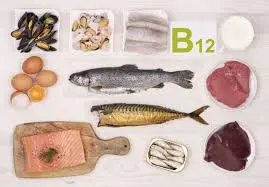
Make sure you’re getting enough vitamin B12 if you choose to adopt a vegan diet. This vitamin is vital for maintaining the function of your brain system and red blood cells.
Only foods derived from animals naturally contain vitamin B12. Finding vegan sources of the vitamin becomes more challenging as a result, and you may need to take a supplement. It’s recommended to talk to your healthcare team about taking a supplement that also contains selenium and iodine.
The Vegan Society and the British Dietetic Association advise taking a supplement or eating fortified meals at least two to three times a day to ensure you’re getting enough vitamin B12. The recommended dosage for the supplement is 10 mcg per day or at least 2000 mcg per week.
Since Marmite, unsweetened soy drinks, and breakfast cereals are all fortified with vitamin B12, we have included them in this meal plan. To be sure, however, read the food label.
To boost the vitamin B12 content of your meals, you may also try adding nutritional yeast flakes to savory foods.
Calcium
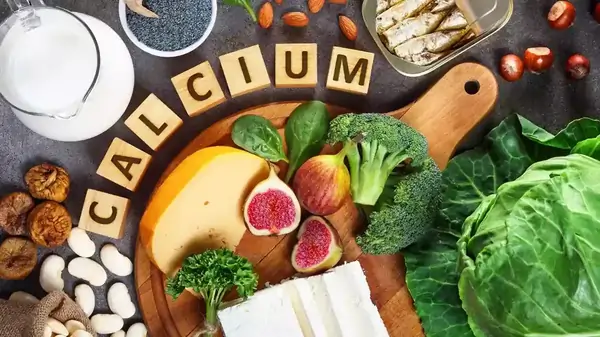
Selecting dairy substitutes that are calcium-fortified is also crucial. Dairy substitutes lack the natural calcium that our bodies require for strong bones and teeth. Kale, watercress, okra, tahini, dried figs, haricot beans, and almonds are additional vegan sources of calcium.
Iron

Red blood cells, which transport oxygen throughout the body, are made using iron. Iron is abundant in meat, so you’ll need to make sure you’re still receiving enough each day.
Because they are excellent sources of iron, we have incorporated foods like fortified bran flakes, seeds, green vegetables, dried fruit, and spicy roasted chickpeas into this meal plan.
Iodine
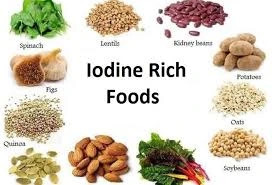
Iodine is used by our body to produce thyroid hormones, which regulate the activity of your beta cells. You might need to think about taking a supplement because plant-based sources are unreliable and many plant-based milks aren’t fortified right now.
Consult your medical team to determine if this is suitable for you. If you want to take iodine supplements, be careful not to take too much of them as this may lead to thyroid issues.
Because they are excellent sources of iron, we have incorporated foods like fortified bran flakes, seeds, green vegetables, dried fruit, and spicy roasted chickpeas into this meal plan.
Because green leafy vegetables are good for you, we’ve also included recipes like our kale and green lentil soup. Among the many nutrients they offer is vitamin K. Consuming greens like spinach, kale, or broccoli daily will help you meet your needs for vitamin K, which is necessary for blood coagulation and wound healing.
Can vegans have diabetes?
Diabetics can follow a vegan diet, and many of them succeed. The Academy of Nutrition and Dietetics says the following in its position statement on vegetarian diets:
Vegetarian and vegan diets that are properly designed are nutritious, and healthy, and may help prevent and treat specific illnesses.
Type 2 diabetes is one of the conditions that can benefit from a plant-based diet. For diabetics, a vegan diet can be beneficial, especially when it comes to managing type 2 diabetes.
However, a diet should be approached carefully and with consideration for nutritional demands, just like it would be for anyone else. While following a vegan diet, there are a few nutritional factors to be aware of.
Nutritional aspects of switching to a vegan diet
- Control of carbohydrates
- Sources of iron proteins
- Fats
- B12 Vitamin
- Calcium
- Vitamin D
Go to Vegan Diabetes Diet: What you need to know to learn more about how to satisfy your dietary needs. To maximize your nutrition, we also encourage you to consult a plant-based dietitian.
Can diabetics benefit from a vegan diet?
Indeed! People with diabetes, especially those with type 2 diabetes, may benefit from a vegan diet.
People with diabetes in particular can benefit greatly from switching to a plant-based diet, as can the general public. Recent studies demonstrate how a vegan diet improves blood sugar and cardiovascular health, two important components of diabetes.
Starting a plant-based diet: A guide
- Consult your healthcare provider. Discussing significant dietary changes with your healthcare team is crucial if you have diabetes so that you can collaborate to keep an eye on your health. To maintain more stable blood sugar levels, you might need to modify your insulin dosage or use other drugs.
- Give special attention to plant-based protein and non-starchy foods. Make sure to always include healthy fats (avocado, olive oil, nuts, and seeds) along with veggies and protein (such as tofu, beans, or nuts) on your plate.
- Find out from your doctor if you need to take any supplements or vitamins. You might need to think about taking vitamin B12 or B6, niacin, iron, calcium, omega-3 fats, iodine, or zinc because often people who go from eating meat to a plant-based diet don’t get enough of these essential elements.
- Slowly introduce new meals. Don’t consume three meals of beans on your first day of veganism if you’ve never eaten beans before. Try new things in moderation and keep an eye on your blood glucose levels as you go because you never know how they might affect them.
- Examine the labels on the foods you eat. Generally speaking, processed foods may include elements you want to stay away from, such as additional animal products (such as dairy, whey, gelatin, or eggs) or blood-sugar-raising sweets. To understand what you’re putting into your body, be sure to read the ingredient list.
Success advice
Do you want to follow a vegan diet to manage your diabetes? The following advice will help you get off to a great start and stay on course:
- Make a plan in advance. Organizing your meals and keeping some nutritious snacks on hand will greatly aid in your success. Additionally, if you’re planning to eat out, be sure to look over the menu beforehand.
- Consume a lot of non-starchy vegetables. No starchy veggies are rich in nutrients and fiber but very low in carbohydrates. They will help you feel content and full while having little impact on your blood sugar levels.
- Every meal and snack should be balanced. A healthy ratio of carbohydrates, lipids, and protein should be included in every meal and snack. If at all possible, include some non-starchy veggies as well.
- Use supplements sensibly. Because vegan diets can be deficient in several nutrients, supplements are usually required. Ask your doctor to arrange a blood test to determine whether you are deficient in iron, vitamin D, or vitamin B12 so that you can select the appropriate supplements.
- Change up your protein intake. To make sure you’re getting the necessary amounts of essential amino acids for good health, eat a range of plant-based protein sources.
- Regularly check your blood sugar levels. Even if you don’t follow a vegan diet, if you have diabetes, you should check your blood sugar frequently to keep track of your patterns and let a healthcare provider know if you see any worrying trends.
Avoid these pitfalls.
Similarly, when following a vegan diet for diabetes, there are a few things to be aware of.
Consuming too many processed foods
- Vegan and other highly processed foods are frequently low in fiber and protein and high in sugar and chemicals. This also applies to beverages like fruit juices and sodas.
- You should limit certain foods even if you don’t have to completely avoid them, particularly if you struggle to control your blood sugar levels.
- Consuming too much ultra-processed foods has been associated with weight gain and a higher risk of diabetes, high blood pressure, and several types of cancer.
Meals that are low in fat and protein
- Similarly, you should avoid meals or snacks that are mostly made up of carbohydrates and have minimal amounts of fat or protein.
- Protein may improve feelings of fullness and lessen the impact of carbohydrates on blood sugar levels.
- Furthermore, lipid sources like olive oil may offer other health advantages like enhancing heart health and facilitating better nutrient absorption.
Changing this diet to fit your needs
Since everyone needs a slightly different amount of nutrients each day, our vegan meal plan should be modified to meet your needs. We don’t all need to consume the same number of calories, for instance. Men require more calories than women since they are typically heavier and have more muscle.
Additionally, young toddlers require fewer calories than adults do. However, ladies aged 15 and up and boys older than 11 are probably going to require more calories. As children get older, their dietary needs alter.
Therefore, modify portion proportions to suit the needs and preferences of your household. The total nutritional intake for the day will fluctuate if you drink more milk than is recommended by the meal plan.
Advice for diabetics planning plant-based meals
Give whole foods a priority.
Choose entire foods such as fruits, vegetables, whole grains, legumes, nuts, and seeds when you go grocery shopping. While processed goods are typically found in the middle aisles of grocery stores, whole foods are more often found on the perimeter.
Foods that have undergone some sort of alteration from their original condition are referred to as processed foods. This can be done for some purposes, like as extending their shelf life, enhancing their flavor, or making preparation simpler. Certain processed foods might make managing your diabetes more challenging, but not all of them are unhealthy. Consider items such as sodas, candy, chips, fast meals, and juices.
Make a meal and snack plan.
It can be quite beneficial to manage diabetes if you plan your meals and snacks. To save for the days when you don’t have time to prepare, we advise preparing meals in advance and freezing portions. In addition to calming your thoughts, this lessens the possibility that you would reach for processed foods in a hurry.
Allow no more than four to six hours between meals for the best blood sugar regulation. Additionally, it’s crucial to eat a snack before bed. We advise combining a protein source with a carbohydrate for snacking. Chia pudding, vegetables and hummus, and apples and peanut butter are a few examples.
Select complex carbs.
According to Diabetes Quebec, each meal should contain 45–75 grams of carbs. Select complex carbs that have a lower glycemic index, such as:
- Whole grains (quinoa, oats, brown rice, etc.)
- Pulses and legumes, such as beans and lentils
- Vegetables that are not starchy
- Better blood sugar control results from these types of carbs because they are less prone to induce blood sugar spikes and crashes.
Limit the size of your portions.
Paying attention to portion sizes is crucial for the best blood sugar control. Complex carbs nevertheless affect your blood sugar levels, but less so than simple carbohydrates and refined sugar. Try to have 2/4 fruits and veggies, ¼ protein, and ¼ carbs on your plate. Portion control can be aided by using smaller dishes and bowls.
Add lean proteins.
Consuming a healthy amount of protein can aid with blood glucose control. Include a protein source at each meal, such as beans, tempeh, tofu, etc. Additionally, protein aids with satiety, or the sensation of fullness, which may support weight-loss initiatives.
See our Vegan Diabetes Meal Plan for further details on what kinds of foods are appropriate for a vegan diabetes diet.
Last thoughts: diabetic vegan meals
People with diabetes, particularly those with type 2 diabetes, can greatly benefit from a plant-based diet. A vegan diet has advantages beyond lowering blood sugar. A well-balanced vegan diet can support cardiovascular health, blood pressure control, weight management, decreased inflammation, and general health.
A vegan diet necessitates careful consideration of your intake of protein, iron, vitamin B12, vitamin D, and calcium in addition to controlling your carbohydrate intake. Balance is the key to maximizing the advantages of a plant-based diet for managing diabetes. You can start along this path with our list of the top 10 vegan recipes that are suitable for people with diabetes.
There are a few things you can do to make the switch easier and benefit from a plant-based diet for diabetes. Choosing complex carbs, limiting portion sizes, prioritizing whole foods, organizing your meals and snacks, and incorporating lean protein are just a few of the numerous strategies.
Conclusion
Following a vegan diet can help you effectively control your diabetes. According to research, vegan diets may help overweight individuals lose weight and increase their insulin sensitivity and blood sugar levels.
You must, however, ensure that you are obtaining adequate protein and nutrients, avoiding too many carbohydrates, and not basing your diet on excessively processed foods.
However, other diets are effective in treating diabetes. The Mediterranean diet and low-carb diet are two more diets that are beneficial for diabetics.
Regardless matter whether veganism is new to you or a significant aspect of your life, you can be confident that, with a little preparation, you can follow a vegan diet if you have diabetes.
FAQs
What does becoming vegan entail?
Vegans are people who only eat plant-based foods and don’t eat any animal products. This implies that they abstain from eating anything derived from animals, such as dairy products, meat, fish, eggs, honey, and more. In contrast, vegetarians may still consume dairy products and eggs, but they typically abstain from meat.
Can diabetics follow a vegan diet?
Indeed! In actuality, a plant-based diet can be more beneficial for managing your diabetes, mental health, and physical health. Nevertheless, if you have diabetes and wish to adopt a plant-based diet, there are a few crucial factors to take into account.
Can diabetics benefit from a vegan diet?
The current dietary guidelines for people with diabetes are well suited to vegan diets because they tend to be lower in saturated fat, and higher in fiber, fruit, and vegetables, as well as other preventive compounds like antioxidants and phytochemicals.
For breakfast, what do vegans with diabetes eat?
Morning meals
Ten minutes. Coconut Scramble from Kerala.
Latte with Dandelion Root.
Quick scrambled tofu.
An Overview of Vegan Cereals for Breakfast.
3–4 minutes. Protein Smoothie with Super Green Superfruit.
Is insulin safe for vegans to take?
The same insulin protein that the human pancreas produces can now be generated by bacteria thanks to recombinant technology. This eliminates the need to harvest human cadavers, which would limit the supply of human-derived insulin due to strong taboos and limited availability. Human insulin that is sold commercially is vegan and kosher.
Do vegans consume a lot of sweets?
While hardcore vegans avoid refined cane sugars that have probably been processed with animal proteins, most vegans view sugar as a food that is generally acceptable. However, they can eat sugar prepared solely from beets, certified organic cane sugar, and raw cane sugar that is suitable for vegans.
Which diet is ideal for someone with diabetes?
Vegetables and fruits.
Entire grains, including barley, quinoa, brown rice, oats, and whole wheat.
Lean meats, poultry, turkey, fish, eggs, nuts, beans, lentils, and tofu are examples of proteins.
Low-fat or nonfat dairy products, including cheese, yogurt, and milk.
What are diabetic vegan snacks?
Diabetes-Friendly Vegan Recipes from a Plant-Based Registered Dietitian
We advise combining a protein source with a carbohydrate for snacking. Chia pudding, vegetables and hummus, and apples and peanut butter are a few examples. According to Diabetes Quebec, each meal should contain 45–75 grams of carbs.
What is the source of natural insulin?
Some of the cells in the pancreas, a little organ near your liver, create insulin. Following a meal, the pancreas releases insulin into the bloodstream as blood sugar levels rise. After leaving your bloodstream, the insulin facilitates the sugar’s absorption by cells throughout your body.
References
- Ld, S. S. M. R. (2021, June 8). A Vegan Diet Guide for diabetes: Is it suitable? Healthline. https://www.healthline.com/nutrition/vegan-diabetes#bottom-line
- Bridget Chapple. (n.d.). Vegan meal plan. Diabetes UK. https://www.diabetes.org.uk/living-with-diabetes/eating/meal-plans/vegan
- Rd, E. L. M. (2021, April 14). Vegan Diabetes Diet Plan, created by a dietitian. EatingWell. https://www.eatingwell.com/article/7898582/vegan-diabetes-diet-plan/
- Fontaine, A. (2024, July 12). Vegan Meals for Diabetes: from a Plant-Based Registered Dietitian. Alyssa Fontaine. https://alyssafontaine.com/vegan-meals-for-diabetes
